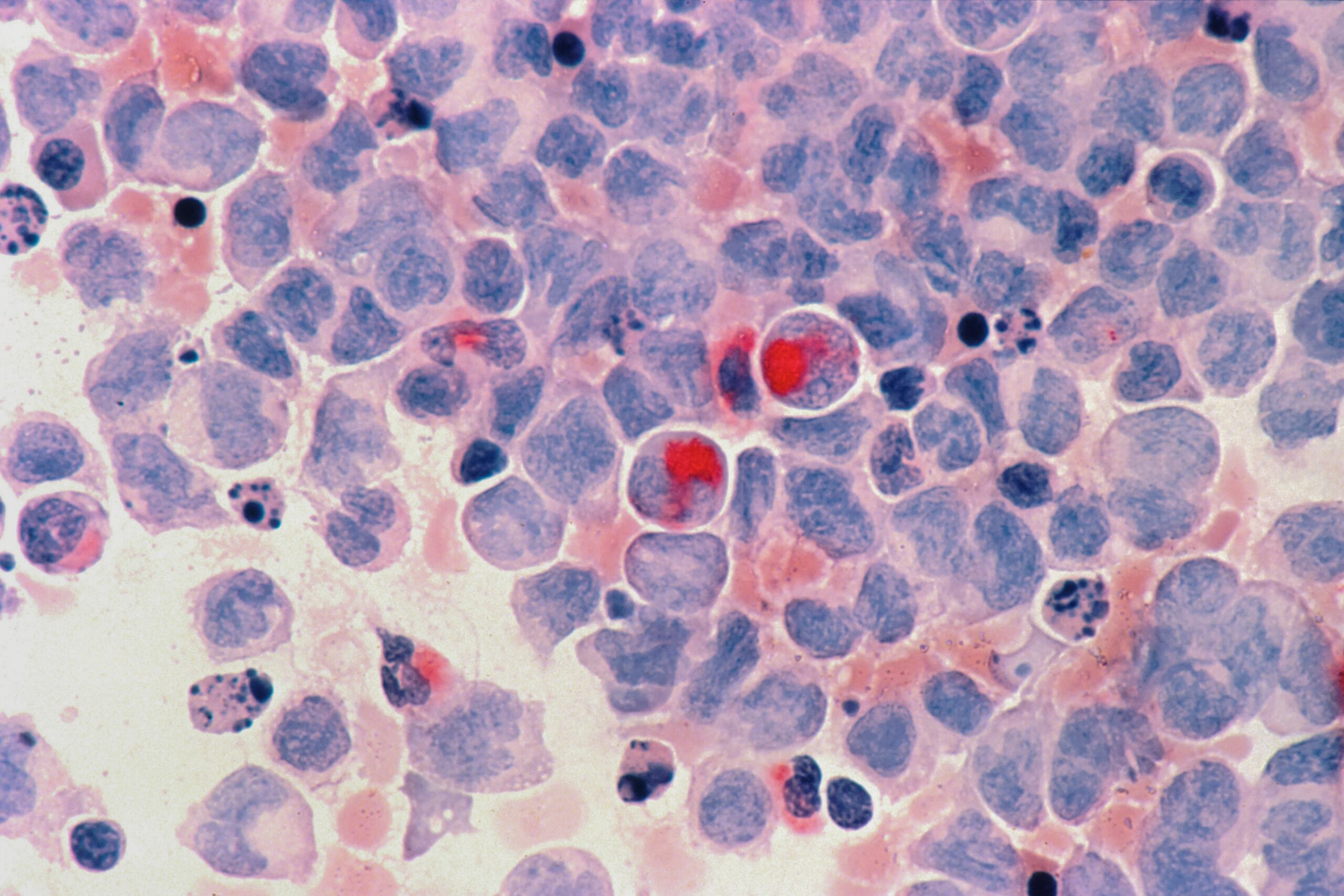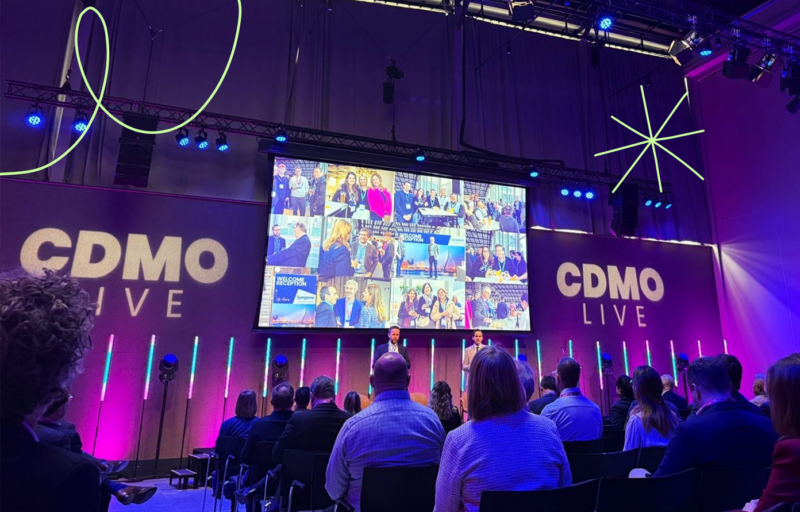blog:
Conquering Chronic Myeloid Leukemia: Battling a Silent Threat

The human body replenishes blood cells all of the time. This process begins in the bone marrow, with myeloid stem cells developing into myeloid blasts, before eventually turning into mature, fully functioning blood cells. Chronic Myeloid Leukemia (CML) is a type of blood cancer coined as a type of myeloproliferative neoplasm. Myeloproliferative neoplasms are a group of diseases in which the bone marrow makes too many red blood cells, white blood cells or platelets. In the case of CML, the disease affects a group of white blood cells called myeloid cells.
In this blog post, we discuss what causes CML, explore the current treatments, and share some insights from Lisa McFarlane, a member of our ramarketing family who has first-hand experience with the disease.
What causes CML?
CML is caused by a genetic abnormality known as the Philadelphia (Ph) chromosome. More common in older people, and rare in children under 15 years old, in CML patients, there is an exchange of genetic material between two chromosomes; 9 and 22. This results in the formation of a shortened chromosome 22, known as the Ph chromosome. It is not currently known what causes the Ph chromosome but the abnormality leads to the overproduction of leukemic cells (abnormal white blood cells) in the bone marrow. These overproduced cells overcrowd the bone marrow, meaning there isn’t room for other blood cells to be made. This causes lower-than-normal levels of red blood cells, which results in anaemia, tiredness, breathlessness and an inability to fight infections properly.
There are three phases of CML;
- Chronic phase – the initial phase of CML. Here the leukemia cells multiply slowly and function normally. Symptoms aren’t usually seen at this phase, which can last for several years.
- Accelerated phase – in this phase, CML becomes more aggressive. The leukemia cells multiply rapidly and the disease may not respond as well to treatment. Symptoms become more pronounced.
- Blast phase – the most aggressive stage of CML. Here, the majority of the cells in the bone marrow are immature blast cells and the disease begins to act more like acute leukemia – progressing rapidly with symptoms becoming severe.
Left untreated, CML is fatal, with a survival rate of around 2-3 years. However, with treatment, the disease typically progresses slowly over a number of years. Many patients can remain in the chronic phase for extended periods of time or even indefinitely thanks to treatment options.
Advancements in the treatment of CML
Changes to care and advancements in treatment have transformed CML into a disease where, if treated effectively, patients can live a long and normal life. The 5-year overall survival of patients with CML has dramatically improved since the development of the tyrosine kinase inhibitor (TKI) imatinib, which targets the protein produced by the chromosomal abnormality. Survival rates have almost doubled since 2000-2004 from 16% to 33% in 2016, which can be attributed to the increased use of TKIs.
In addition, many patients can be affected by TKI-related toxicities. While life-threatening events are uncommon, side effects can still have a significant impact on quality of life. Several studies are now focusing on proactive dose optimization strategies.
Currently, there are more than three dozen new medications that prevent the leukemia cells from thriving. Targeted anti-cancer drugs result in fewer side effects, so are a preferable choice for many patients.
Living with CML
Around 750 people are diagnosed with CML each year in the UK. One of those individuals was Lisa McFarlane, Senior Designer at ramarketing, who has shared her experience with CML.
“Receiving my diagnosis amidst a global lockdown was a surreal experience. Those initial symptoms I had brushed aside as insignificant, I later came to realise were all part of Chronic Myeloid Leukemia. Breathlessness, gradual weight loss, and even that persistent back pain which I had attributed to sitting awkwardly with a makeshift work-from-home setup, all took on a new meaning.
One day, I noticed grey spots in my vision which I initially shrugged off, thinking it might be the onset of a migraine. I rested but the spots wouldn’t go away. Wanting to make sure everything was okay, I called the UK’s non-emergency number and was then put through to a local eye infirmary.
Their care and attention were nothing short of amazing. Tests were conducted, but my eyes appeared healthy. The mystery persisted until a blood test revealed an elevated white blood cell count, signaling something more complex was happening.
A whirlwind of emotions accompanied my diagnosis of CML. The initial panic and fear, coupled with moving house wasn’t ideal, to say the least. Treatment with tyrosine kinase inhibitors (TKIs) became my daily routine. The journey was not without its challenges; my initial side effects included bone pain and stomach discomfort.
But I wasn’t alone. I joined an online support group within the first few weeks of my diagnosis. There, I found a community that shared their own experiences, helping me understand the intricacies of my condition. Although some days it felt overwhelming, it was good to have a place to check in on any new symptoms I experienced whilst undergoing treatment.
Flexibility in my job plays a pivotal role in my ability to manage my condition. The freedom to adapt my work schedule when necessary, especially during flare-ups, allows me to balance health and career. It’s a testament to how understanding and adaptable workplaces can make a profound difference in the lives of employees facing health challenges.
Raising awareness about stem cell donation is a cause close to my heart. It’s an often-overlooked option that can be the only hope for those battling blood-related diseases. I encourage everyone to explore the possibility of becoming a donor – it might just save a life.
As it stands I’m in remission; back in May 2020 my blood leukemia level was 39.6%, and I’m now down to 0% thanks to incredible advancements in treatment. It’s a reminder that research and funding make a world of difference, and as an industry, we need to keep pushing to find more treatments for even the rarest of diseases.”
The hope for a leukemia-free future
There have been large advancements in the last decade in our understanding of CML and how to effectively treat this challenging disease. Many CML patients are even able to achieve treatment-free remission. With its various subtypes, CML poses significant medical challenges, but the relentless pursuit of knowledge, research, and innovation offers hope to patients and their families worldwide.
Awareness, early detection, and ongoing research are the cornerstones of the fight against CML as we move one step closer to a leukemia-free world.
If you are interested in learning more about stem cell donation, see the following resources;
Here at ramarketing, we are passionate about disease awareness and supporting our colleagues. Read Senior Developer, Andy’s insights into life with Fabry Disease.
Related news, insight and opinion




